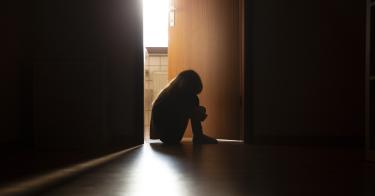Kara was 11 when her family first sold her body for drugs.
Sydney was 14 when she met an older man online who promised her financial security and a better life.
And after another stint in the foster care system, Marcus decided that anything, including homelessness, would be better than the foster family he was living with.
Each of these stories, from real girls and boys in the United States, reflects the most common entry points for children being pulled into child trafficking. The facts are frightening:
- On average, a child enters the U.S. sex trade at 12 to 14 years old. Many are runaway girls who were sexually abused as children.
- Most of the time, victims are trafficked by someone they know, such as a friend, family member, or romantic partner.
- Predators can rent a child for a single sex act for an average of $90. Often, that child is forced to have sex 20 times per day, six days a week.
- Trafficking usually occurs in hotels, motels, online websites, and at truck stops in the U.S.
- About 50,000 people, primarily from Mexico and the Philippines, are trafficked into the U.S. annually.
- According to the Federal Human Trafficking Report, “In 2018, over half (51.6%) of the criminal human trafficking cases active in the U.S. were sex trafficking cases involving only children.”
- Traffickers use social media platforms to recruit and advertise victims of human trafficking, according to anti-trafficking advocates.
Films like “Sound of Freedom” and “Taken” highlight the dangers of international trafficking and exploitation. These films deal with trafficking outside the U.S. The United States, however, is a top destination for victims and a major transit hub. Studies estimate that 83% of child trafficking victims in the U.S. are Americans.
Like all crimes, trafficking has a context. In the U.S., child trafficking is aggravated by four main factors: the porous southern border, predatory social media use, pornography, and broken families.
The Southern Border
The crisis at the southern border is directly linked to an increase in child trafficking in the United States. In April, a whistleblower told Congress’ House Judiciary Committee that the “United States federal government has become the ‘middleman’ in a multibillion-dollar human trafficking operation targeting unaccompanied minors at the southern border.”
In May, U.S. Customs and Border Protection encountered an average of 435 unaccompanied minors per day. One study suggests that drug cartels and traffickers will exploit 60% of these children in prostitution, forced labor, and child pornography. To make matters worse, in June alone, the Biden administration released 344 kids to non-related adults in the U.S.—most of whom already had multiple children in their care. These children are prime targets for traffickers—for sex or labor.
Notably, half of U.S. Immigration and Customs Enforcement’s “most wanted” criminals for child trafficking are from Mexico.
Social Media
Social media platforms like Instagram and TikTok provide market access for traffickers and pedophiles in the United States. These men first meet and groom minors for sexual encounters over social media, often posing as boyfriends. Once they have lured their victims in, they then use social media to advertise and sell the minors for sex.
One organization, United Against Human Trafficking, estimates that “55% of victims of U.S. sex trafficking aged 7 to 11 are recruited through social media apps and websites. … [Because of this,] fewer than 10% of cases happen by kidnapping.”
Traffickers and pedophiles also use social media platforms like TikTok to distribute child pornography.
Pornography
Child traffickers also frequently use minors to produce pornography. This creates a double harm: Not only are children sexually abused, but videos of their abuse are uploaded to major pornography websites like Pornhub, and their abuse is played over and over again.
This is one area where public outrage and action have made progress. After a series of articles exposing Pornhub’s hosting of child pornography, the website deleted 80% of its content overnight—about 10 million videos. And Discover, Mastercard, and Visa immediately cut ties with the site.
Broken Families
The most vulnerable children in the United States are those raised in single-parent homes, especially if an unrelated male is present. Children are 11 times more likely to suffer sexual and physical abuse in such situations. Without the protection of a mother and father in the home, children are more likely to run away, go missing, or spend time in the foster care system. In 2016, the National Center for Missing and Exploited Children found that 86% of sex trafficking victims were in the care of social services when they went missing.
It’s Everywhere
Child trafficking is easy to find if you know where to look. For example, an exit off an interstate highway with a truck stop, an Asian massage parlor, and an adult superstore. Each of these locations separately is statistically more likely to be a location for trafficking, including the interstate itself. If they are grouped together, the statistical possibilities increase dramatically.
It’s also not hard to figure out the types of public policies that could reduce trafficking. Policymakers should focus on social media use, the porn industry, and broken families—all complex matters that demand thoughtful solutions.
But one thing that can be done immediately is less complex and more direct: The Biden administration must follow our existing laws and seal our porous southern border. Much more must be done, but that is a critical first step that could save thousands of children each year from these horrors.
This piece originally appeared in The Daily Signal


